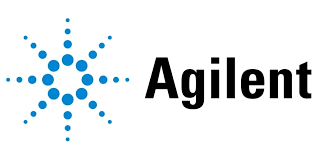Ai In Nursing Education
Published Date: 15 December 2025 | Report Code: ai-in-nursing-education
Ai In Nursing Education Market Size, Share, Industry Trends and Forecast to 2033
This comprehensive report on Ai In Nursing Education delivers a detailed analysis covering market dynamics, segmentation, regional insights, and future forecasts from 2024 to 2033. It offers valuable data and insights on market size, growth trends, technological innovation, and strategic implementations, thereby serving as an indispensable resource for stakeholders in the rapidly evolving education landscape.
| Metric | Value |
|---|---|
| Study Period | 2024 - 2033 |
| 2024 Market Size | $2.80 Billion |
| CAGR (2024-2033) | 7.2% |
| 2033 Market Size | $5.33 Billion |
| Top Companies | MedAI Solutions, NursingTech Innovations, EduNurse AI |
| Last Modified Date | 15 December 2025 |
Ai In Nursing Education (2024 - 2033)
Ai In Nursing Education Market Overview
Customize Ai In Nursing Education market research report
- ✔ Get in-depth analysis of Ai In Nursing Education market size, growth, and forecasts.
- ✔ Understand Ai In Nursing Education's regional dynamics and industry-specific trends.
- ✔ Identify potential applications, end-user demand, and growth segments in Ai In Nursing Education
What is the Market Size & CAGR of Ai In Nursing Education market in 2024?
Ai In Nursing Education Industry Analysis
Ai In Nursing Education Market Segmentation and Scope
Tell us your focus area and get a customized research report.
Ai In Nursing Education Market Analysis Report by Region
Europe Ai In Nursing Education:
Europe is experiencing steady growth in the Ai In Nursing Education sector, with market values projected to rise from 0.74 in 2024 to 1.41 by 2033. European educational institutions, supported by robust regulatory frameworks and a focus on quality improvement, are increasingly investing in AI-powered teaching solutions. Collaborative research and cross-border partnerships enhance the strategic importance of this market in the region.Asia Pacific Ai In Nursing Education:
In the Asia Pacific region, the adoption of Ai In Nursing Education is rapidly evolving, with market values growing from approximately 0.61 in 2024 to an estimated 1.16 by 2033. This region is characterized by accelerating digital transformation initiatives in higher education and healthcare, supported by governmental policies that encourage technology-driven learning environments. Institutions are increasingly adopting AI tools to enhance training programs and improve clinical decision-making processes.North America Ai In Nursing Education:
North America remains a leader in integrating advanced technology into nursing education. The market in this region is projected to expand from 0.99 in 2024 to 1.89 by 2033, underpinned by well-established research institutions and significant investments in digital learning platforms. The region’s emphasis on technology-driven innovation and quality assurance has created a dynamic environment for AI adoption.South America Ai In Nursing Education:
South America exhibits a more gradual yet promising growth trajectory. With market values increasing from about 0.08 in 2024 to 0.16 by 2033, emerging technologies are progressively being integrated into nursing education. Although the pace is moderate compared to other regions, innovative projects and local collaborations are laying the groundwork for future technological adoption in the educational sector.Middle East & Africa Ai In Nursing Education:
In the Middle East and Africa, the market is growing from 0.37 in 2024 to about 0.71 by 2033. With investments in education technology and supportive government initiatives, these regions are beginning to embrace AI in nursing education. Despite the slower pace of adoption compared to other regions, ongoing infrastructural developments and innovative learning programs are expected to drive substantial growth.Tell us your focus area and get a customized research report.
Ai In Nursing Education Market Analysis By Education Level
Global AI in Nursing Education, By Education Level Market Analysis (2024 - 2033)
The education level segment focuses on tailoring AI solutions to various academic phases. Undergraduate programs, with a 2024 market size of 1.92 and share of 68.43%, set the foundation for broad exposure to AI tools in simulated clinical scenarios. Graduate programs, although smaller with a size of 0.66 and share of 23.52%, emphasize advanced, research-intensive training. Continuing education initiatives and curriculum design, each with a size of 1.92 and corresponding shares of 68.43%, are critical in keeping pace with evolving technological demands. Faculty training, represented by a size of 0.23 and share of 8.05%, further supports these transitions by equipping educators with the necessary digital competencies.
Ai In Nursing Education Market Analysis By Ai Technology
Global AI in Nursing Education, By AI Technology Market Analysis (2024 - 2033)
Technology-specific segmentation categorizes AI applications into machine learning, natural language processing, and virtual reality. Machine learning, with a market size of 1.92 and a stable share of 68.43%, drives adaptive learning modules and predictive analytics to personalize student performance. Natural language processing, marked by a market size of 0.66 and a share of 23.52%, enhances interactive and conversational learning interfaces, enabling intelligent tutoring systems. Virtual reality, with a market size of 0.23 and a corresponding share of 8.05%, creates simulated clinical environments that offer hands-on training without real-world risks. These technologies collectively represent the backbone of innovative learning experiences in nursing education.
Ai In Nursing Education Market Analysis By Implementation Strategy
Global AI in Nursing Education, By Implementation Strategy Market Analysis (2024 - 2033)
The implementation strategy segment underscores the transformative benefits of AI adoption. Improved Learning Outcomes, with a market size of 1.92 and a significant share of 68.43%, is a primary driver in enhancing clinical competency and academic excellence. Operational Efficiency, reflected by a 2024 size of 0.66 and share of 23.52%, streamlines administrative tasks and improves resource management. Scalability, with a market size of 0.23 and share of 8.05%, ensures that AI solutions can expand seamlessly across varying institutional sizes. These strategic implementations are instrumental in aligning technology investments with the overall educational mission, ensuring that both students and educators reap tangible benefits.
Ai In Nursing Education Market Analysis By Benefits
Global AI in Nursing Education, By Benefits Market Analysis (2024 - 2033)
This segment encapsulates the aggregate benefits derived from integrating AI into nursing education. A notable aspect is the enhancement of technology infrastructure, which supports robust digital learning platforms and seamless data integration. Investments in advanced infrastructure foster improved connectivity and resource sharing across campus networks. Additionally, targeted initiatives in curriculum design and faculty training ensure that both content and instructional quality are elevated. By prioritizing these benefits, institutions can create a sustainable ecosystem in which AI not only augments traditional teaching but also facilitates long-term educational innovation and efficiency.
Ai In Nursing Education Market Trends and Future Forecast
Tell us your focus area and get a customized research report.
Global Market Leaders and Top Companies in Ai In Nursing Education Industry
MedAI Solutions:
MedAI Solutions is recognized for its pioneering efforts in integrating artificial intelligence with nursing education. The company offers state-of-the-art simulation software and digital curriculum tools that enhance clinical decision-making and adaptive learning environments.NursingTech Innovations:
NursingTech Innovations specializes in developing AI-driven learning management systems and virtual simulation platforms. Their innovative solutions help institutions improve operational efficiency and foster interactive, student-centered learning.EduNurse AI:
EduNurse AI has made significant strides in customizing AI applications for diverse educational contexts. By focusing on personalized learning experiences and scalable training modules, the company supports both academic institutions and healthcare facilities in achieving superior educational outcomes.We're grateful to work with incredible clients.









FAQs
What is the market size of ai In Nursing Education?
The AI in Nursing Education market is currently valued at $2.8 billion and is expected to grow at a CAGR of 7.2% from 2024 to 2033. This growth reflects the increasing implementation of AI technologies in educational frameworks.
What are the key market players or companies in this ai In Nursing Education industry?
Key players in the AI in Nursing Education market include educational institutions, technology firms, and AI solution vendors. They are pivotal in developing innovative AI tools that enhance learning experiences and operational efficiencies in nursing education.
What are the primary factors driving the growth in the ai In Nursing Education industry?
Growth in the AI in Nursing Education industry is propelled by the demand for improved learning outcomes, operational efficiency through technology, and the need for scalable educational solutions to cater to a diverse student body.
Which region is the fastest Growing in the ai In Nursing Education?
The fastest-growing region in the AI in Nursing Education market is North America, where the market size is expected to grow from $0.99 billion in 2024 to $1.89 billion by 2033, driven by technological advancements and educational reforms.
Does ConsaInsights provide customized market report data for the ai In Nursing Education industry?
Yes, ConsaInsights offers customized market research reports that cater to specific needs in the AI in Nursing Education sector, allowing clients to receive tailored insights and dedicated support for informed decision-making.
What deliverables can I expect from this ai In Nursing Education market research project?
From this market research project, you can expect comprehensive deliverables including market analysis, segmentation studies, trend forecasts, competitive landscapes, and strategic recommendations tailored to the AI in Nursing Education sector.
What are the market trends of ai In Nursing Education?
Anticipated trends in the AI in Nursing Education market include advancements in machine learning and virtual reality applications, as well as increased focus on curriculum design and faculty training to enhance educational outcomes.
